Forensic Toxicology Report: Sample Analysis and Testing Procedures
VerifiedAdded on 2020/04/15
|5
|822
|182
Report
AI Summary
This forensic toxicology report outlines the analysis of various drug samples, including MDMA, Lidocaine, Cocaine, Amphetamine, Methamphetamine, and Marijuana, based on evidence from a crime scene. The rationale for testing these substances is provided, considering the disorganized scene and potential drug use. The report details preliminary tests using chemical reagents like cobalt thiocyanate and Marquis Reagent, followed by chromatographic techniques such as Thin Layer Chromatography (TLC), Gas Chromatography (GC), and High-Performance Liquid Chromatography (HPLC) or Gas Chromatograph–Quadrupole Mass Spectrometer (GC–QMS) for identification. Special handling and storage concerns are also addressed, considering the combined use of substances and specific storage requirements. The report references relevant scientific literature supporting the methods and findings.
1 out of 5
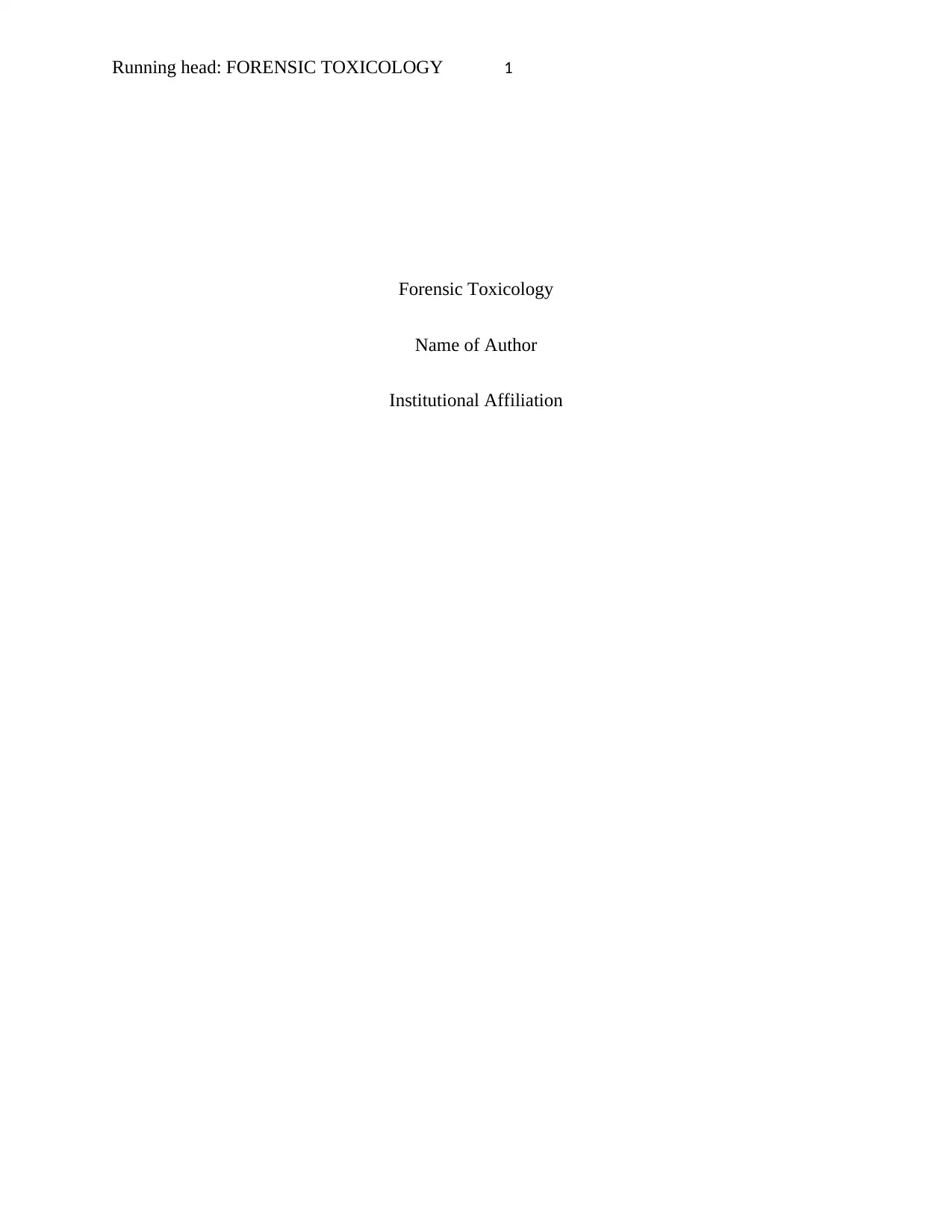
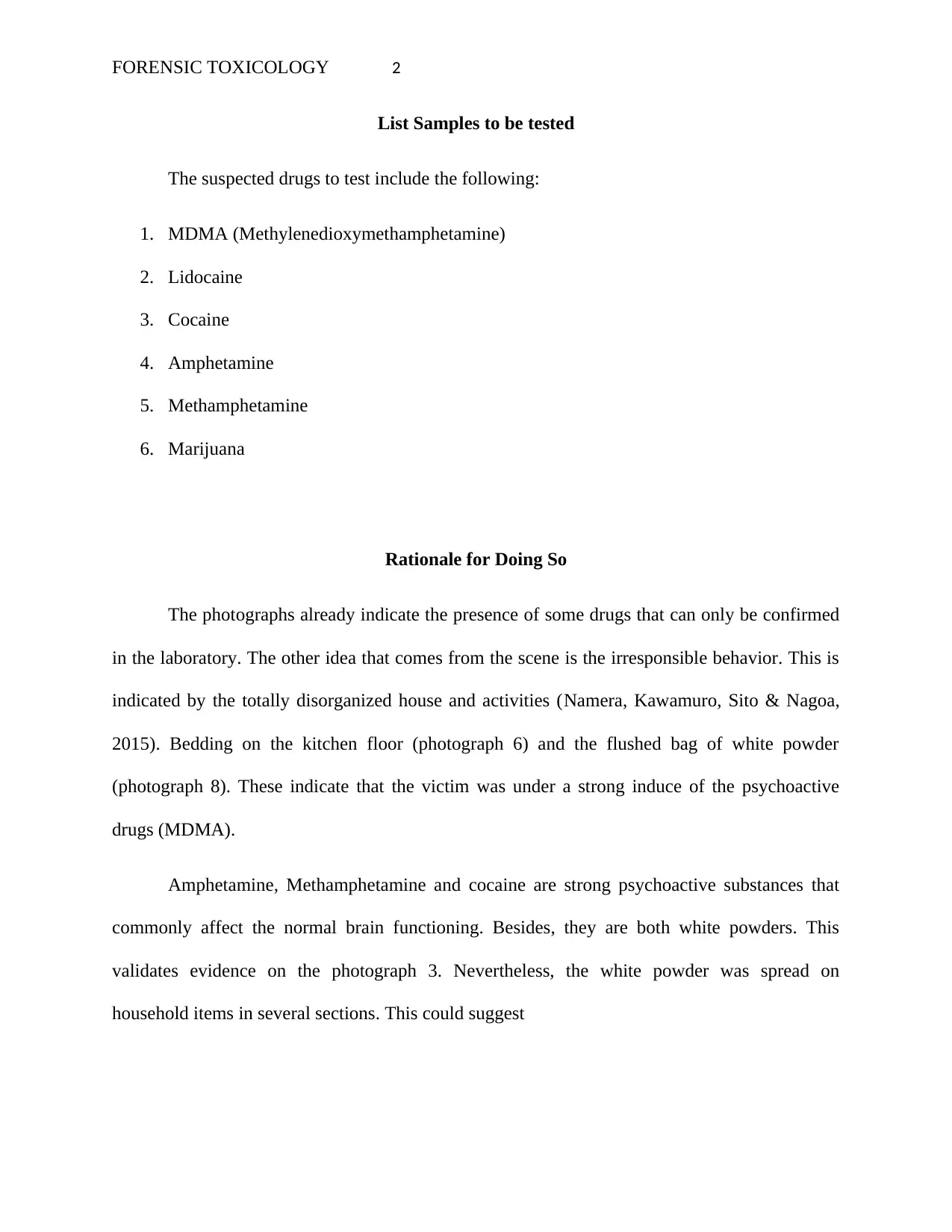
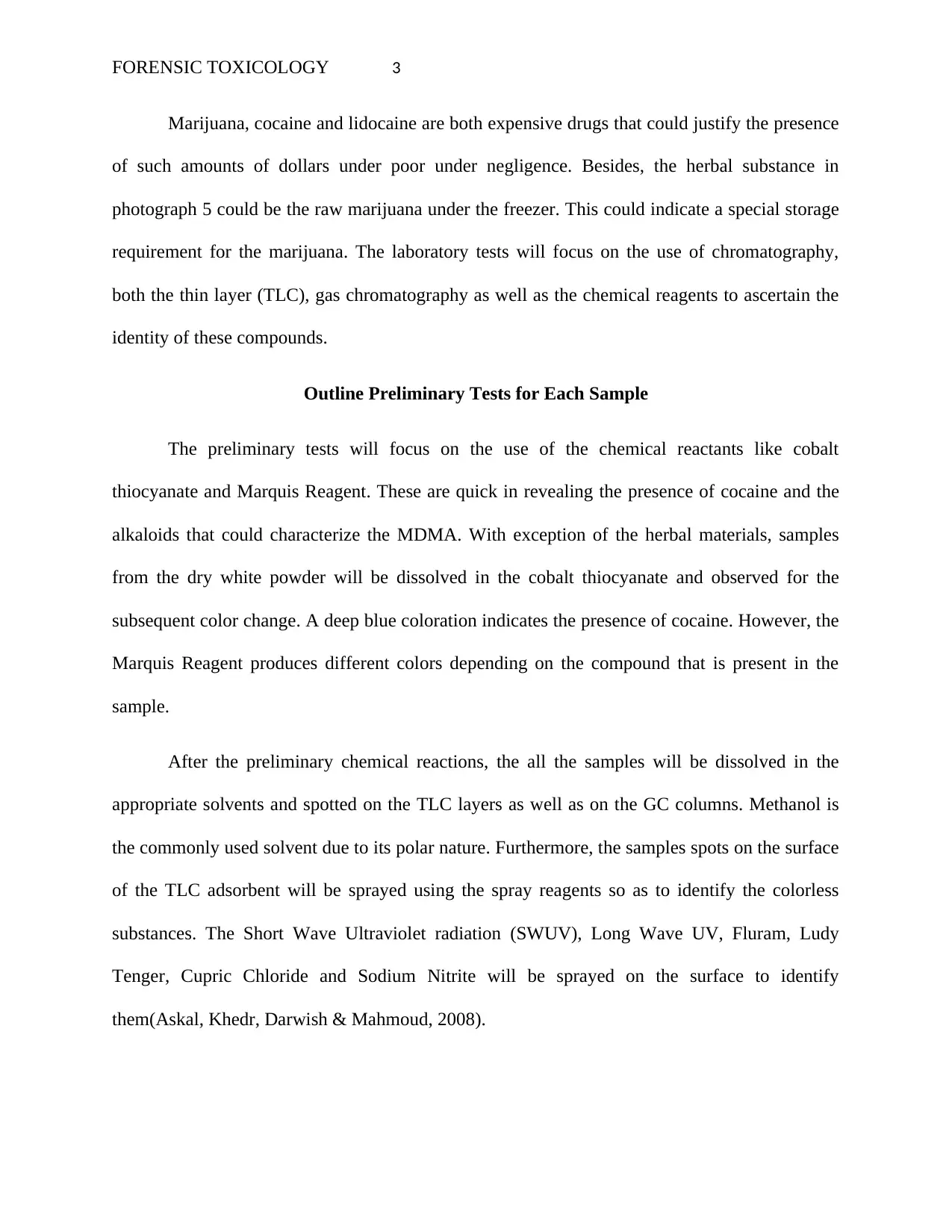

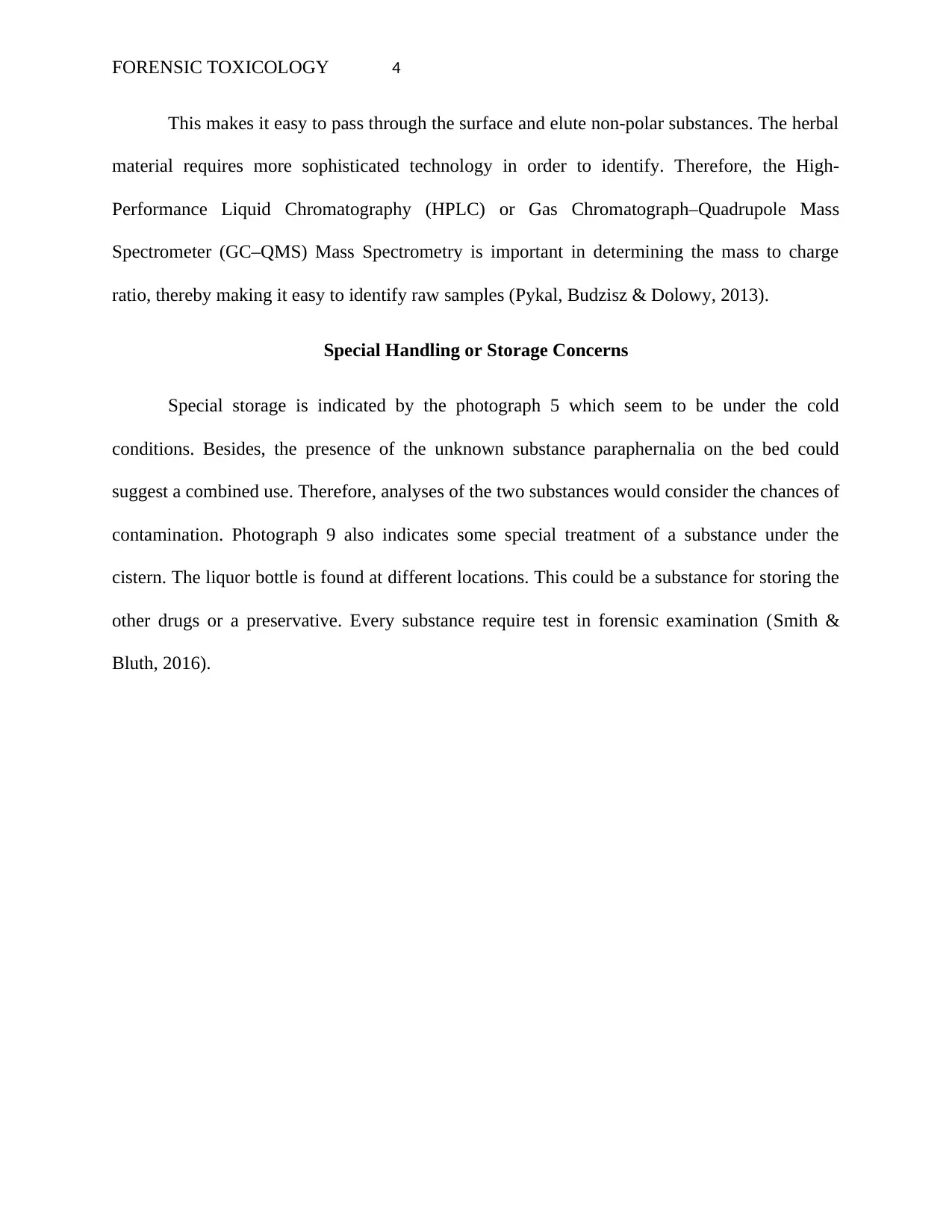
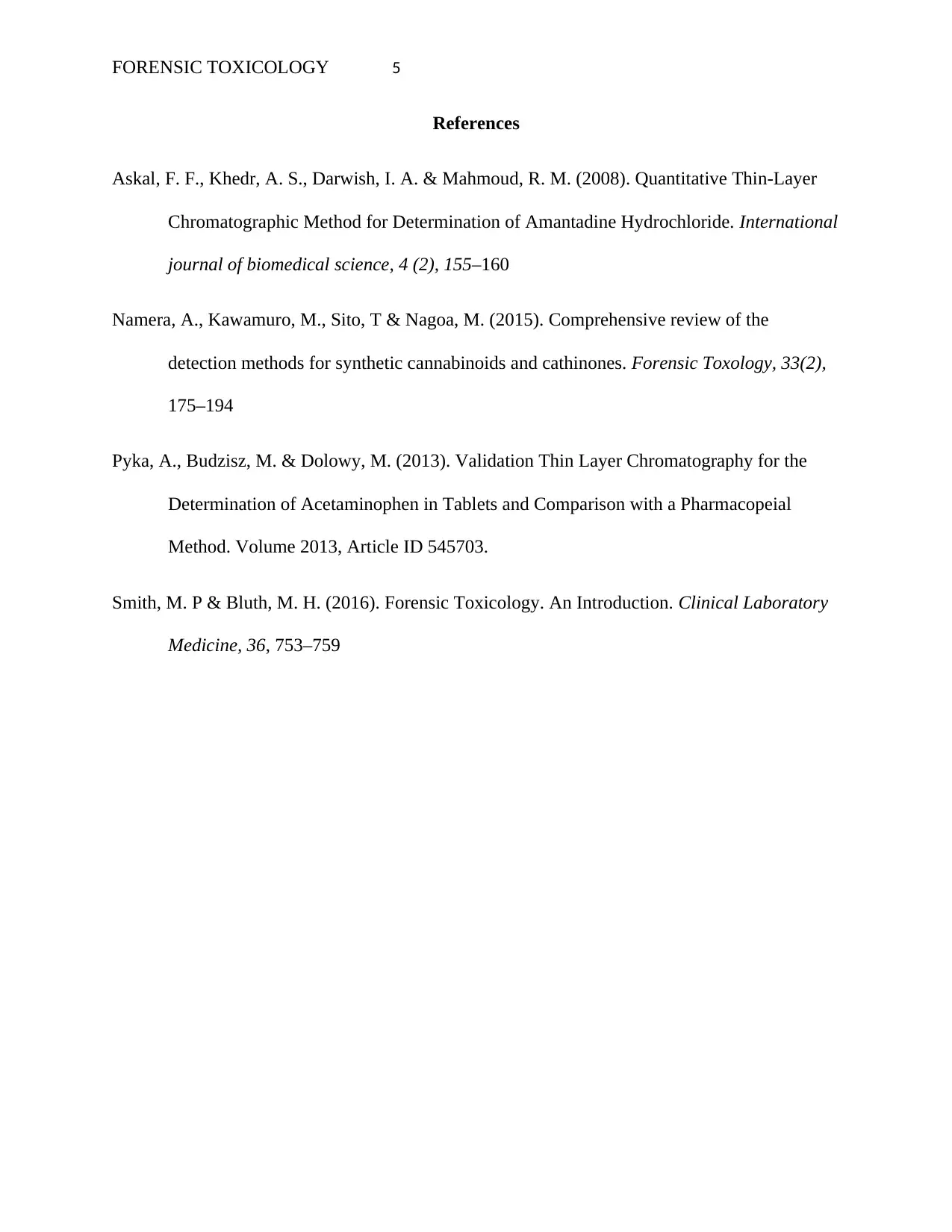
![[object Object]](/_next/static/media/star-bottom.7253800d.svg)